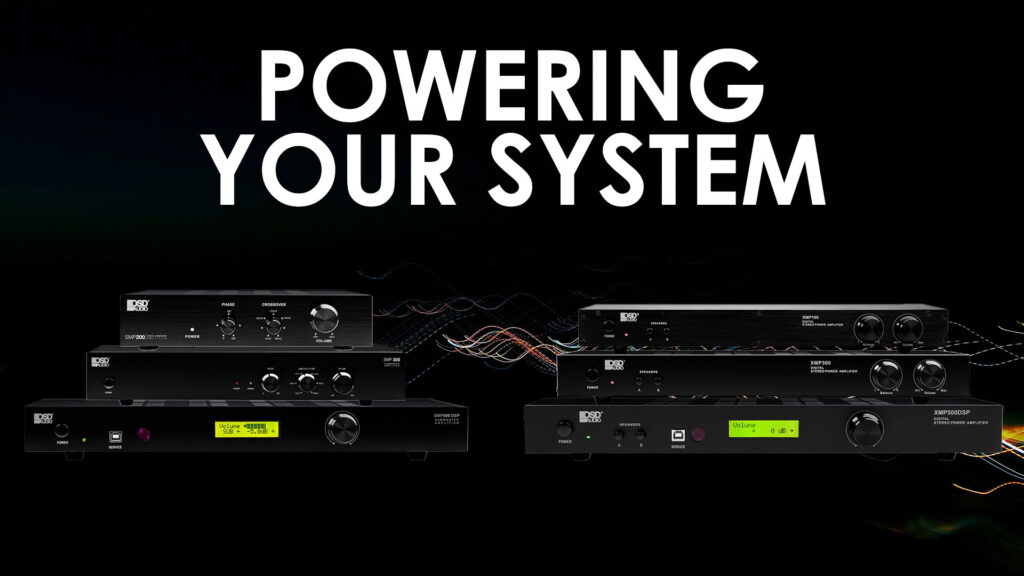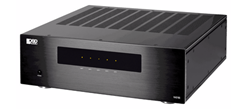
Today we are going to talk, in general terms, about power and how it gets from your wall to your speakers. In simple terms, we will cover everything that happens to the power that comes out of your outlets to the power being delivered by your speakers.
The main thing to remember is that watts (which we are familiar with as a rating for amplifiers and speakers) are simply volts x amps. What does that mean you ask! Well, the outlets on your wall in the USA are all rated at 110 volts. How many amps are available depends on the connection to your main power panel. Typically, the outlets are rated at 15 amps, but some are rated at 20 amps. The maximum power in watts available from a 15-amp outlet is 15(amps) x 110(volts) = 1,650(watts).
The 1,650 watts are shared with other products plugged into the same circuit, and there is some system loss. To see what is available for the amplifier, these need to be deducted. If there are no other products using the power, then about 1,500 watts are available for the amplifier (10% being system loss).
There are four different types of amplifiers used for audio:

Class A
Class A/B
Class H
Class D
They all work in different ways and all have strengths and weaknesses.
Class A amps sound great but run extremely hot and lose a lot of watts creating that heat. Typically, with dynamic sound, they operate around 10% efficiency, which means that the 1,500 watts can only deliver 150 watts to the speakers. In a two-channel system, this would be 75 watts and in a 5-channel amp, it would be 30 watts per channel.
Class B amps are more efficient but are not used for audio because of extremely high-distortion levels.
Class A/B
amps have some of the benefits of Class A, overcome the distortion of Class B, and retain some of the increased efficiency. Typically, they are 50% efficient with only half of the watts creating heat and not sound. 1,500 watts become 750, or 2 x 375, or 5 x 150 watts.

Class H amps are a type of class A/B that uses a design that creates more efficiency. If well-executed they can sound as good as A/B amps and increase efficiency to around 60%. They are, however, more costly to build. At 60% efficiency the 1,500 watts become 900 watts, or 2 x 450, or 5 x 180, or even 7 x 128 watts.

Class D amps are a further refinement of A/B/H designs and not digital as most people think. They are the most advanced and most efficient of all current amplifier technologies. Inexpensive Class D designs can sound extremely poor, and expensive ones can sound exceptionally good, but there is a lot of variances. They are typically 90% efficient. 1,500 watts becomes 1,350, or 2 x 675, or 5 x 270, or 7 x 193 watts.

How much power do your speakers need?
This depends on what you are trying to achieve. If your goal is to accurately re-create what the artist and recording engineers intended, then your speakers need to play as loud and as accurately as the speakers in the studios where the sound was recorded. Typical studio systems are capable of 105-108 dB continuous sound pressure levels (SPL) and capable of peak SPL of 115-118dB.
How many watts do you need to get to 118dB?
Check the efficiency of your speakers. This is measured in dB’s and will be somewhere between 80dB (very inefficient) and 99dB (very efficient). Then use this calculation: a 1-watt amplifier will give you the dB’s your speakers are rated at – so 90dB efficient speakers give you 90dB with a 1-watt amplifier. If you double the power of the amp to 2 watts, the dB’s go up 3dB’s to 93dB, and so on and so on:
4 watts 96dB,
8 watts 99dB,
16 watts 102dB,
32 watts 105 dB,
64 watts 108 dB,
128 watts 111 dB,
256 watts 114 dB,
512 watts 117 dB,
1024 watts 120dB.
Next, check the power handling of your speakers and check this against the efficiency and watts.
Example 1. Speaker efficiency 90dB, power handling 100 watts, maximum dB is going to be just under 111 dB. This speaker cannot achieve studio-level peaks.
Example 2. Speaker efficiency 93dB, power handling 250 watts, maximum dB is around 117 dB, very close to studio peak levels.
The OSD Black S-series are 93/94dB efficient and can handle 250 watts—all of them can achieve studio-level peaks.
